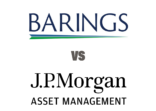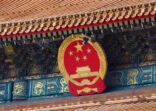Data from FE Analytics show that among the top five performing funds over the trailng three years, only two are averaging positive returns.
The country’s industrial sector has been hit hard by China’s slowdown. Shipbuilders, steelmakers, petrochemical and construction companies are struggling as regional demand is sluggish, while consumer-led sectors are challenged amid a high unemployment rate.
Paul Chan, CIO for Asia ex-Japan at Invesco, noted that the country’s growth was earlier this year affected by the outbreak of the Middle East Respiratory Syndrome (MERS).
Chan said that the South Korean government has dealt with the MERS situation with a $13bn fiscal stimulus package, but cyclical conditions still remain difficult.
“Growth conditions will likely remain subdued as external demand continues to be sluggish and domestic conditions remain mixed,” Chan said.
The weak Japanese yen has also had an impact by enabling Japanese rivals to sell their exports cheaper than Korean exporters.
Corporate reform
While Japan is pushing its corporations to reform, slim down and become more shareholder friendly, South Korean companies also need look at internal reform.
Family-run conglomerates (chaebols), such as Samsung, Hyundai and LG, dominate the stock market. The controlling families of these chaebols sometimes ignore the interests of minority shareholders.
This autocratic system is a problem for international investors who are concerned about performance, fraudulent accounting and bribery.
“All too often, chaebols consist of a labyrinthine company structure. Efficiency has often been sacrificed in favour of elabourate cross-holding arrangements to keep the family firmly in control. There is also a tendency for chaebols to pay less-than-generous dividends,” Will Ballard, head of emerging market and Asia Pacific equities said.
When it comes to returns, regional rival Taiwan wins hands-down.
“The dividend yield on Korean equities is about 1.3%, comparing poorly with the 4.7% average of Taiwanese companies,” Ballard said.
Long-term view
Simon Jeong, portfolio manager for the Invesco Korean Equity Fund, noted that a bottom-up stock selection approach with a five-year outlook is suitable for the Korean equity market.
Jeong’s top five holdings – Ottoji, Dongsuh, Woongjin Coway, Yuhan and Nong Shim Holdings – are holdings that the fund has had exposure to for around five years.
Commenting on the Invesco Korean Equity Fund, Luke Ng, senior vice president of FE Advisory, said: “The Invesco fund can be used core equity exposure with long-term prospects since the underlying holdings are stable and predictable.”
The Invesco Korean Equity Fund is the top performing fund with an average three-year return of 40%.
A look at the top five performing South Korean equity funds over the trailing three years:

















